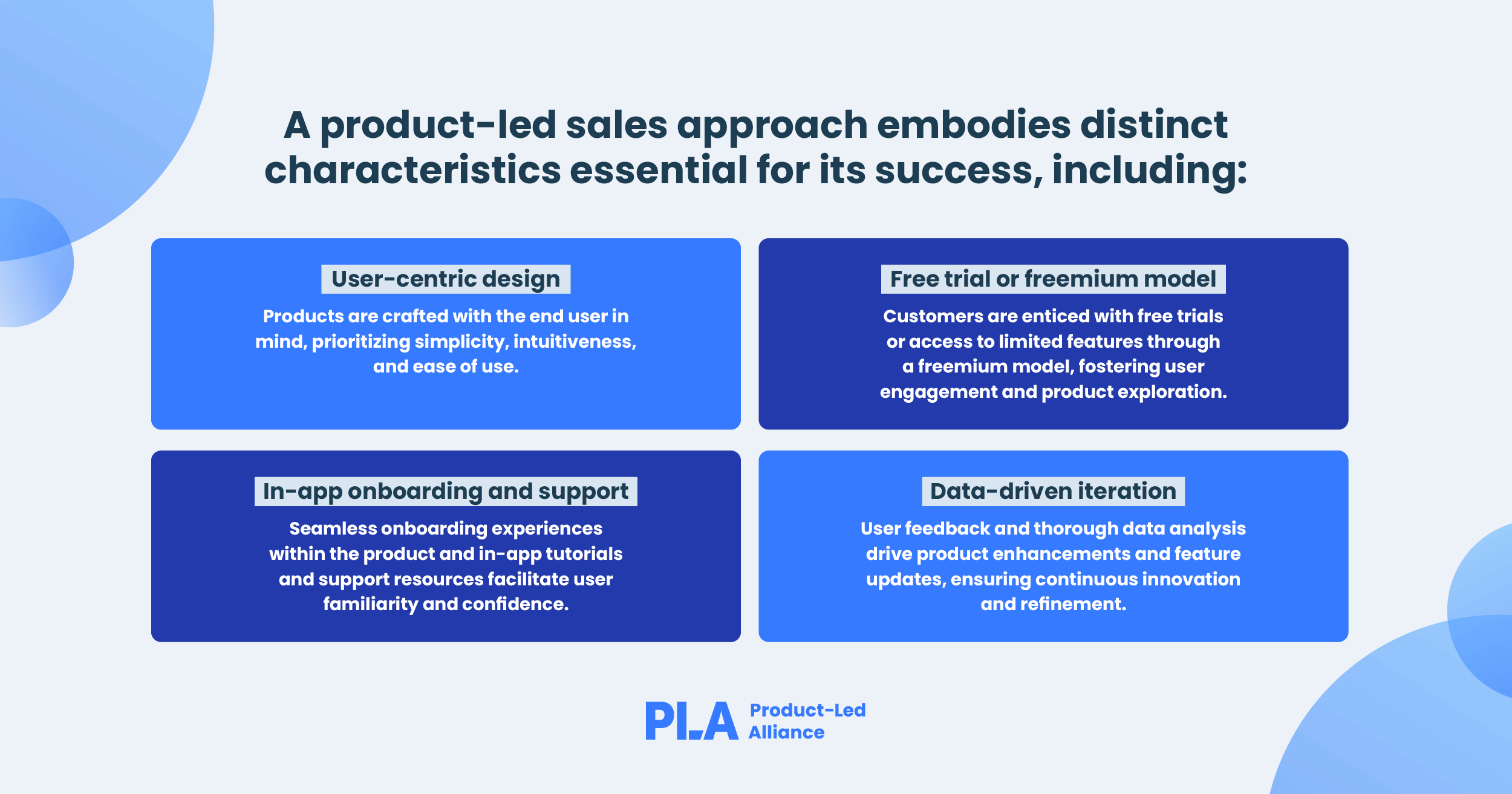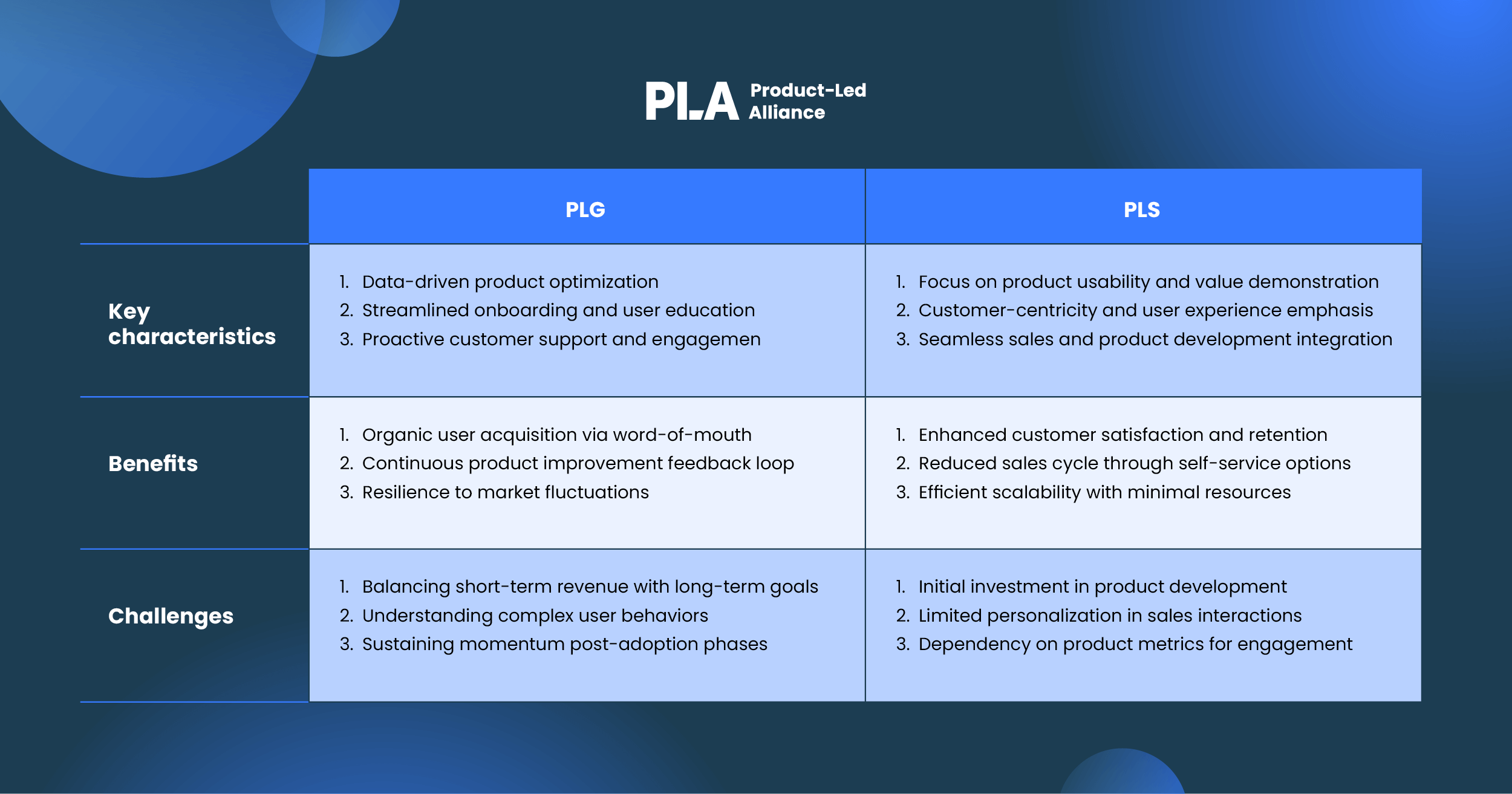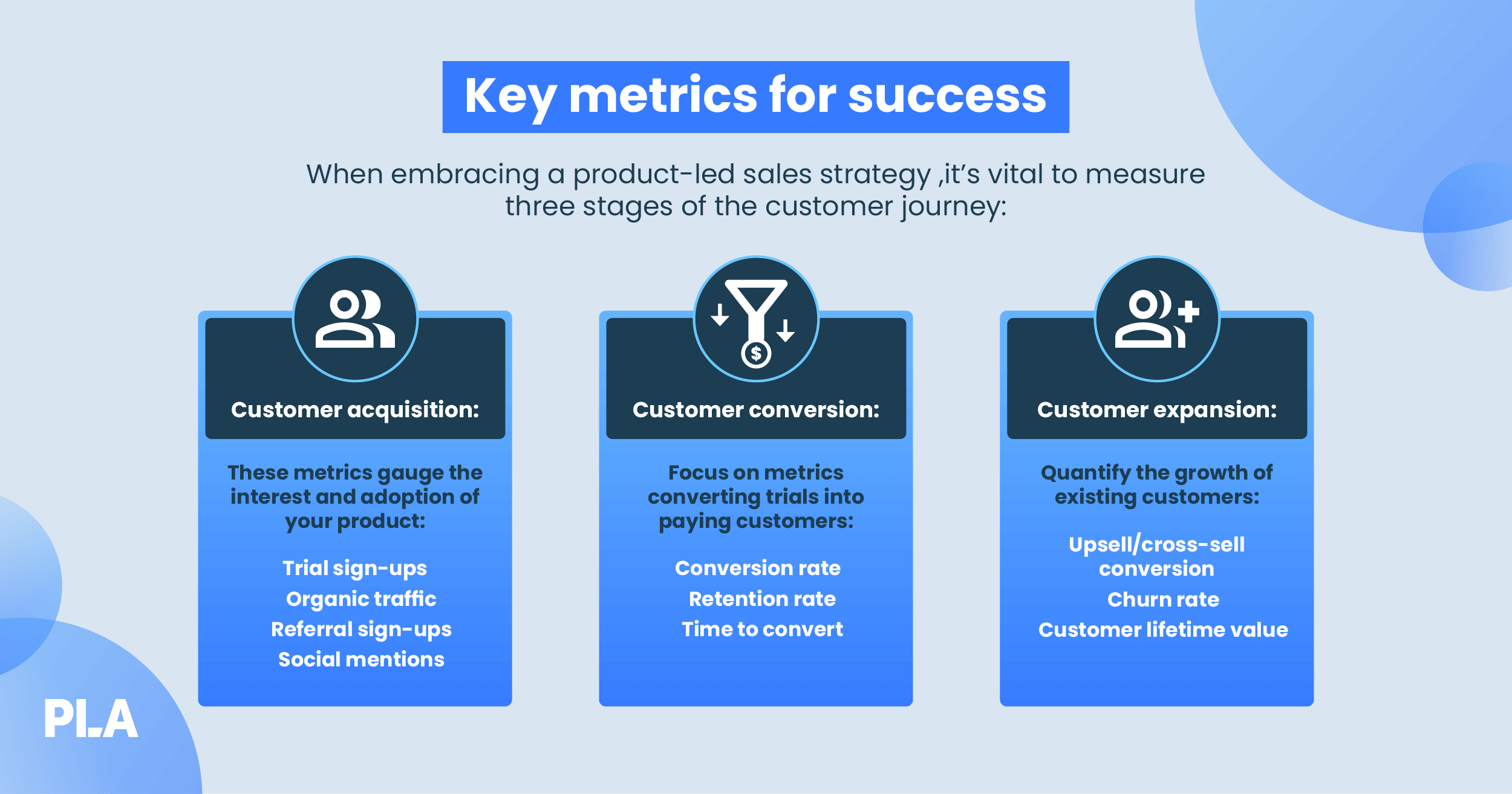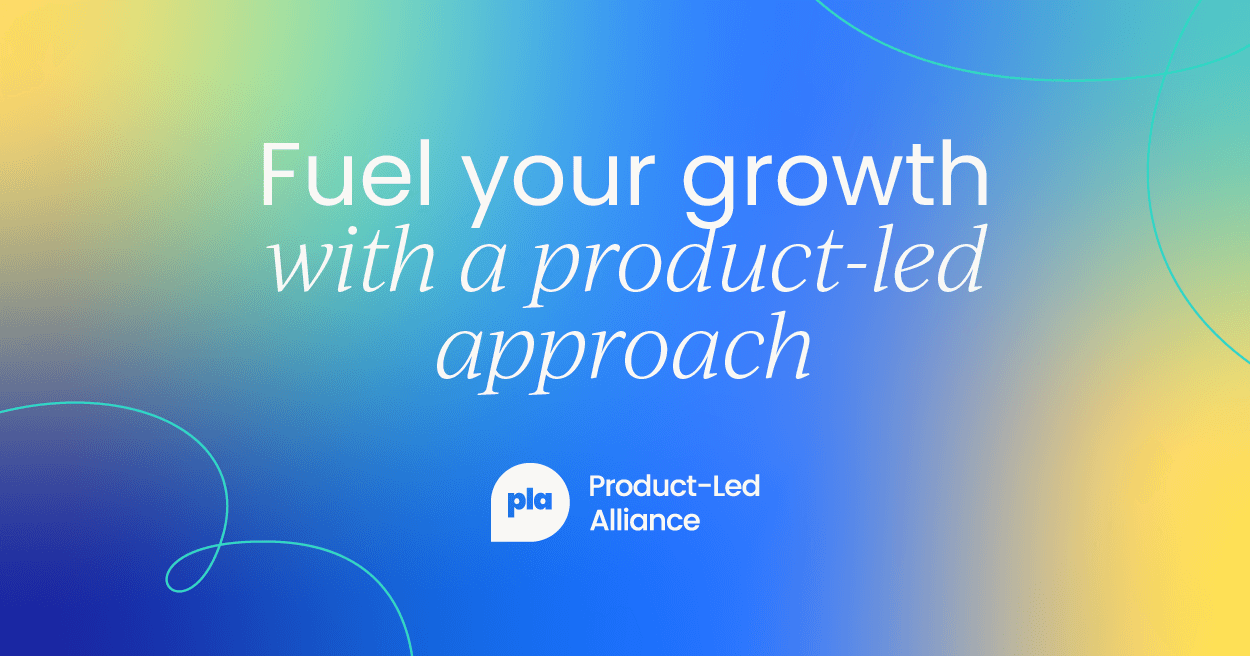When it comes to business, change is the only constant. Sounds daunting, but we promise you, change is good. To remain competitive, you need to continually seek fresh approaches to engage and retain customers.
Enter product-led sales (PLS), a strategy currently gaining momentum. But what exactly is PLS, and how does it differ from traditional sales methods?
What is product-led sales?
Product-led sales is a customer-centric approach that places the product or service front and center in the acquisition, activation, and retention processes. Unlike conventional sales techniques reliant on outbound marketing and sales teams, PLS harnesses the inherent value and usability of the product to drive growth and revenue.
The importance of PLS in modern business cannot be overstated. It resonates deeply with today's consumers, your customers, who prioritize self-service and seamless user experiences. By empowering your users to explore and engage with the product independently, you can cultivate a sense of ownership and loyalty.
Through robust product analytics and usage data, PLS also equips you with invaluable insights into user behavior and preferences. This data-driven approach allows for iterative product enhancements, improving customer satisfaction and retention rates.
Essentially, PLS represents a paradigm shift in sales methodologies, ushering in an era of customer-centricity and data-driven innovation.
What are the characteristics of product-led sales?

Several companies exemplify the success of the product-led sales model:
Slack: Its collaboration platform garnered widespread adoption through word-of-mouth referrals and viral spread within organizations. By offering a free version with basic features, Slack attracted users and gradually converted them into paying customers.
Dropbox: Offering free storage space with the option to upgrade, Dropbox achieved rapid growth and market dominance. Its seamless user experience and intuitive interface contributed significantly to its success.
Implementing a product-led sales strategy
If you want to incorporate this strategy, adopting a multifaceted approach integrating product development, marketing, sales, and customer success is essential. Here are the fundamental steps:
- Understand the target audience: Conduct thorough market research to discern your audience's needs, pain points, and preferences.
- Optimize user experience: Continuously refine user experience through feedback and behavior analytics to enhance product usability.
- Invest in product education and onboarding: Provide comprehensive onboarding resources, tutorials, and support materials to facilitate user adoption.
- Measure and analyze key metrics: Track metrics like activation rate, retention rate, and customer lifetime value to evaluate the efficacy of product-led sales initiatives.
Product-led growth vs. sales-led growth
Product-led growth (PLG) and product-led sales represent two distinct approaches to driving business success. PLG emphasizes leveraging the product itself as the primary driver of growth. It encompasses the entire customer journey, focusing on acquisition, retention, and expansion by empowering users to derive ongoing value from the product.
On the other hand, product-led sales prioritize driving revenue through product usage and nurturing leads to close deals. While PLG fosters a holistic customer-centric approach, product-led sales involve strategic collaboration between sales and product teams to identify and prioritize user segments for effective engagement.
In essence, PLG focuses on the product's role in sustainable growth throughout the customer lifecycle. In contrast, product-led sales aim to optimize sales strategies by aligning them closely with the product's value proposition.

Deciding between product-led sales and product-led growth
Determining whether to pursue a product-led sales or product-led growth strategy hinges on several considerations, such as product characteristics, market dynamics, and organizational strengths.
- Product nature:
- Product-led sales are advantageous for items with straightforward value propositions, making them ideal for transactional goods.
- PLG is well-suited for subscription-based services or platform-centric solutions, offering scalability and long-term viability.
- Target market dynamics:
- Understanding the target market's preferences and behaviors, including geographic, psychographic, and demographic factors, aids in choosing the most effective approach.
- Adapting to market changes: Continuously monitoring and adapting to changes in the target market, such as shifts in consumer trends or competitive landscape, ensures relevance and effectiveness in product-led sales strategies.
- Organizational capabilities:
- Assessing internal capabilities, such as sales expertise, product development agility, and resource allocation, helps align the chosen strategy with the company's strengths and goals.
- Building cross-functional collaboration: Fostering collaboration between different departments, such as sales, marketing, and product development, enhances organizational capabilities and enables a more cohesive approach to product-led sales initiatives.
Ultimately, the selection between product-led sales and product-led growth should align with the unique needs and opportunities of your business, ensuring a strategy that maximizes success and sustainable growth.
Building a product that sells itself
Let’s talk product development, where the aim is not merely to create a product but to craft something with inherent appeal that drives sales effortlessly. Let's explore the strategies and methods to achieve this goal.
- Understanding intrinsic value
Intrinsic value refers to a product's inherent worth and usefulness to its users, addressing genuine needs and solving real problems.
- Conducting market research
Market research is pivotal for identifying customer pain points and understanding their needs through surveys, interviews, and data analysis.
- Creating a unique selling proposition (USP)
Craft a USP that clearly communicates your product's benefits and features, highlighting what sets it apart from competitors.
- Focusing on user-centric design
Prioritize user experience (UX) and user interface (UI) design to ensure your product is intuitive, easy to navigate, and enjoyable to use.
- Building trust and credibility
Utilize social proof, testimonials, and reviews to showcase positive customer experiences and build trust with potential buyers.
- Offering exceptional customer support
Provide quick responses to inquiries, offer helpful resources like tutorials and FAQs, and aim for high customer satisfaction.
- Continuous improvement
Establish feedback loops to gather user insights and embrace iterative development to make incremental improvements based on feedback and market trends.
Building a product that sells itself requires understanding your customers, creating value, building trust, and continuous improvement. By following these strategies, you can develop a product that not only meets your audience's needs but also drives organic sales growth.)
Crafting a user-centric onboarding experience
User-centric onboarding is crucial for product-led sales because it's like the friendly guide that shows customers around a new place. When onboarding is tailored to users' preferences and needs, it's like rolling out the red carpet and saying, "Hey, we get you!"
This personalized approach not only makes users feel valued but also helps them quickly grasp the value of the product or service. It's like having someone show you all the cool features of a gadget instead of leaving you to figure it out on your own.
Plus, when users feel comfortable and confident using a product from the get-go, they're more likely to stick around and spread the word to others. So, user-centric onboarding isn't just about making a good first impression; it's about setting the stage for long-term relationships and boosting those sales numbers!
Understanding onboarding
At its essence, onboarding is the digital equivalent of rolling out the red carpet, guiding users through the initial steps of engaging with your product or service.
Imagine navigating a maze without a map – daunting, right? Similarly, a complex onboarding process or lack thereof can leave users feeling lost. Effective onboarding can be the difference between seamless integration into your platform and users bouncing off to explore other options.
Key elements of effective onboarding
Crafting a user-centric onboarding experience demands meticulous attention to detail and a profound understanding of user psychology. Here are essential elements to consider:
Clear instructions: Simplify the process by breaking down tasks into manageable steps and providing clear instructions at every stage.
Personalization: Tailor the onboarding journey to match user preferences, behavior, and demographics, ensuring a personalized experience for each user.
Progress tracking: Incorporate progress indicators to help users visualize their journey and understand what lies ahead.
Designing your onboarding process
When designing your onboarding process, keep these factors in mind:
- User research: Dive deep into understanding user needs, pain points, and expectations through comprehensive research.
- Simplified sign-up: Streamline the sign-up process by minimizing unnecessary fields and offering social sign-ins to enhance user convenience.
- Interactive tutorials: Engage users with interactive tutorials, tooltips, and guided tours to familiarize them with key features in an engaging manner.
- Feedback mechanisms: Implement surveys, ratings, and user testing to gather insights and refine the onboarding experience based on user feedback.
Strategies for successful onboarding
- Welcome emails: Extend a warm welcome to users with informative emails highlighting key features and encouraging action.
- In-app messages: Deliver timely tips, tricks, and tutorials within the app to guide users through the onboarding process and demonstrate the value of your product.
- Gamification: Enhance the onboarding experience with gamification elements like progress bars and rewards to incentivize exploration and engagement.
Mastering product value communication
When products clamor for attention, effectively communicating your product's value proposition is essential for standing out. Whether you're unveiling a new gadget, service, or app, how you convey its worth can determine its success or failure. But what exactly is a value proposition?
Your value proposition embodies the value your product offers customers, setting it apart from competitors. A compelling value proposition catches potential customers' eyes in a crowded market, influencing their purchasing decisions. Crafting a clear value proposition is key.
Keep it concise, clear, and compelling, answering the question: "What's in it for me?" from the customer's viewpoint. Speak their language, avoiding complex jargon, and highlight how your product can improve their lives or solve their problems. Visual aids like images and videos enhance your message, making complex ideas easy to grasp.
Highlight your unique selling points to differentiate yourself from rivals. Engage customers with high-quality visuals showcasing your product's features and benefits. Leverage social proof through testimonials and case studies to build trust, and offer guarantees or trials to ease purchase hesitations.
Optimize your website, social media, and email campaigns to effectively communicate your value proposition, constantly refining your strategies based on analytics and feedback for optimal results.
Measuring success in product-led sales
Curious about how to measure the effectiveness of your product-led sales approach? It goes beyond just tracking revenue; it involves delving into data to reveal valuable insights, patterns, and growth prospects.
Imagine it as cracking the code of your users' behavior – understanding what they want, what they prefer, and what challenges they face. In this journey, metrics act as your guiding star, steering you through the complexities of user acquisition, activation, retention, and expansion.
Key metrics for success
When embracing a product-led sales strategy, it's vital to measure three stages of the customer journey:

Analytics tools
You can use analytics platforms to monitor these metrics effectively. For example:
- Google Analytics: Tracks and analyzes website and app performance.
- Amplitude: Specializes in product analytics and creating custom conversion funnels.
- Mixpanel: Excels at customer segmentation to identify high-value target customers.
Creating a measurement framework for product-led sales
Here's a framework to implement:
- Defining goals:
- Acquisition: Define clear objectives for acquiring new users or customers. This could include targets for website visits, app downloads, or sign-ups.
- Conversion: Establish measurable goals for converting acquired users into paying customers or active users. This might involve targets for trial-to-paid conversion rates, activation rates, or first-time purchase metrics.
- Expansion: Set objectives for expanding the usage or adoption of your product among existing users. This could include goals related to upselling, cross-selling, or increasing usage frequency.
- Selecting metrics:
- Acquisition: Track metrics such as unique visitors, leads generated, or cost per acquisition (CPA) to measure progress towards acquisition goals.
- Conversion: Metrics like conversion rate, average revenue per user (ARPU), or churn rate can provide insights into conversion performance.
- Expansion: Monitor metrics such as expansion revenue, customer lifetime value (CLV), or product engagement metrics to gauge expansion efforts.
- Choosing analytics tools:
- Acquisition: Utilize tools like Google Analytics, Mixpanel, or Kissmetrics to track website traffic, user behavior, and acquisition channels effectively.
- Conversion: Platforms like Amplitude, Heap, or HubSpot can provide in-depth insights into user interactions, funnel performance, and conversion metrics.
- Expansion: Consider using customer relationship management (CRM) systems, customer success platforms, or in-app analytics tools to track expansion-related metrics and user behavior.
This comprehensive approach ensures that goals are clearly defined, progress is effectively measured through relevant metrics, and the right analytics tools are chosen to track and analyze performance accurately.
Tracking over time
Regularly monitor your analytics and metrics to observe trends and optimize experiences for sustainable growth. Engage cross-functional teams to address downward trends and ensure alignment with the product-led sales strategy.
Ideally, aim for consistent upward trends across key metrics for at least 2-3 months to validate product/market fit and drive repeatable growth.
Responsibility for metrics typically lies with the Product Growth/Growth Product team or marketing/product teams, emphasizing the importance of cross-functional collaboration in leveraging insights.
Overcoming challenges in product-led sales
Embracing product-led sales brings exciting opportunities, yet it demands a significant shift in mindset and approach across the organization. Here's how to navigate common hurdles:
Developing products that showcase value
Ensure your products immediately demonstrate their value to users. Early flows should highlight benefits to keep users engaged.
Convincing stakeholders to support the model
Educate executives and sales leaders on the long-term benefits of product-led selling. Persuade them to allocate resources towards product design and engineering, showcasing the model's potential for greater success.
Building capabilities beyond the product
Invest in post-purchase experiences like customer success, support, and community building. These elements shape users' perceptions and contribute to long-term satisfaction.
Risks and timelines:
- Potential risks: Beware of declining revenue, resistance from leadership, and underestimating post-sales capabilities.
- Timeline: Expect a 3-5 year journey to maturity with product-led sales, but early momentum can accelerate this process under strong leadership.
Navigating these challenges requires a concerted effort and strategic planning, but the rewards of product-led sales can be substantial in the long run.
Conclusion
Product-led sales isn't just a trend; it's a game-changer for modern businesses. By focusing on delivering value through the product itself, companies can forge deeper connections with their customers, leading to increased satisfaction and loyalty. The beauty of this approach lies in its ability to adapt and evolve alongside customer needs and market demands.
With product-led sales, businesses can streamline processes, reduce acquisition costs, and ultimately drive sustainable growth. So, if you're looking to stay ahead in today's market, embracing a product-led sales strategy might just be the key to unlocking your full potential.
Want more product-led goodness? We've got a whole gaggle of hubs waiting for you to explore. Jump on in and get your hands dirty in all things PLG.




 Follow us on LinkedIn
Follow us on LinkedIn




